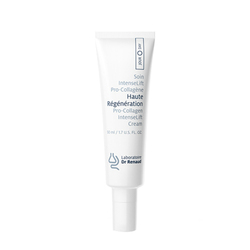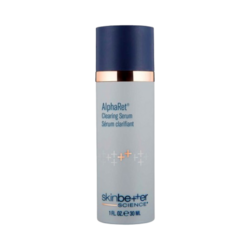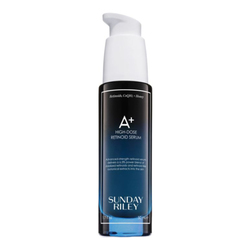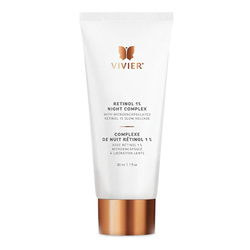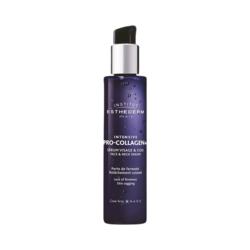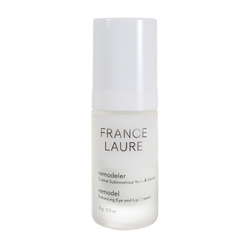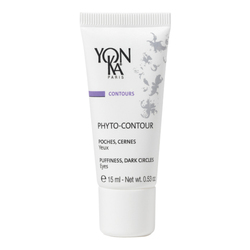Autmn Skincare Shift

From Warm Evenings to Crisp Nights: Autumn Skincare Shift
Introduction
As balmy summer nights give way to the first cool whispers of autumn, our skin carries the imprint of the season gone by—sun-drenched afternoons, humid evenings, and the steady wear of heat, sweat, and environmental stress.
Those moments may be golden in memory, but their traces on your complexion can be less endearing: lingering dryness, uneven tone, stubborn dark spots, or a rougher texture than you remember.
 |
Autumn offers a gentle pause—a time when softer sunlight and cooler air create the ideal conditions to recalibrate your routine. Nighttime becomes your ally, a space for your skin to recover and renew with targeted care. Incorporating ingredients that support repair—like retinoids, gentle exfoliating acids, and deeply nourishing hydrators—can help smooth, brighten, and strengthen your skin, preparing it to glow through the crisp nights ahead and the winter that follows. |
Why Nights Are Best for Skin Repair
Your skin follows a circadian rhythm—a 24-hour biological cycle that regulates everything from cell regeneration to barrier function.
During the day, your skin acts as a barrier, constantly battling:
-
UV radiation generates free radicals that damage collagen and elastin.
-
Pollution particles induce oxidative stress and inflammation.
-
Temperature fluctuations cause micro-damage to the barrier, leading to dryness and sensitivity.
By contrast, at night your body increases blood flow to the skin, delivering more oxygen and nutrients to fuel repair. Cell mitosis—the process where cells divide and multiply—reaches its peak, accelerating the replacement of damaged cells. The skin’s transepidermal water loss rate also rises, making the barrier more permeable. This permeability means active ingredients applied at night can penetrate deeper into the epidermis, interacting more effectively with target cells.
Why Autumn Specifically Works in Your Favor
|
Autumn isn’t just a seasonal mood shift—it’s a physiological advantage for your skin. The environmental changes that come with this time of year create an ideal environment for introducing or intensifying active treatments like retinoids and exfoliating acids.
|
 |
-
Cooler nights reduce inflammation.
Heat exposure can dilate blood vessels and increase skin redness, particularly in individuals prone to sensitivity or rosacea. Warmer weather also accelerates transepidermal water loss (TEWL), weakening the skin barrier. Autumn’s cooler evenings help regulate skin temperature, minimize heat-triggered inflammation, and create a calmer environment for actives to do their work without exacerbating irritation.
-
Less environmental stress allows for focused regeneration.
Summer’s environmental stressors—intense sun, high humidity, pollution spikes from ozone, and temperature extremes—force your skin to remain in a constant state of defense. In autumn, the overall environmental load is lighter, meaning your skin can divert more of its cellular energy toward repair processes like collagen synthesis, barrier reinforcement, and cellular turnover. This shift from “protection mode” to “repair mode” is the perfect window for transformative skincare."Autumn gives your skin a break from constant defense, creating the perfect conditions for repair, renewal, and the safe use of potent actives."
How to Transition Smoothly
Jumping straight into nightly use of retinoids or exfoliating acids can overwhelm your skin—especially if you’re starting in autumn after months of summer sun exposure. The key to success is a gradual, supportive approach that allows your skin to adapt without unnecessary irritation.
Start slow to build autumn tolerance.
Begin by applying retinoids or acids just 1–2 nights per week during the first few weeks of Autumn. This gentle start allows your skin’s barrier to adapt after the harsher summer months, reducing the risk of redness, peeling, or excessive dryness. As your skin adjusts to the cooler, calmer season, you can gradually increase usage to every other night, and eventually nightly if needed.
Buffer with autumn-appropriate hydration.
Autumn air can be cooler yet drier, which means pairing your actives with a hydrating serum or nourishing cream is key. Look for formulas rich in hyaluronic acid, glycerin, ceramides, or squalane to lock in moisture and reinforce your skin’s lipid barrier. This not only minimizes irritation but also helps your skin maintain comfort as it acclimates to active treatments.
Alternate active and recovery nights.
Balance is especially important in autumn, as the season is all about renewal without overstripping the skin. On non-active nights, focus on barrier-repair routines—use gentle cleansers, soothing serums with niacinamide or panthenol, and emollient-rich moisturizers. This “skin cycling” approach gives your skin recovery time between treatments, allowing it to rebuild and strengthen before the next active night.
Fall Nighttime Skincare Routine
How Your Skincare Should Evolve
The way your skin behaves in July is not the same as in October. Heat, humidity, and long daylight hours call for a lighter, oil-controlling approach, while crisp autumn air and longer nights create the perfect conditions for richer, more reparative care.
Here’s how your summer nighttime routine stacks up against your autumn upgrade—and why now is the ideal time to make the switch.
Cleansing: Fresh vs. Comforting
Summer nights:
-
Lightweight gel or foaming cleansers to remove sweat, sunscreen, and excess oil.
-
Focus is on feeling refreshed and clean without heaviness.
Autumn upgrade:
-
Switch to cream or hydrating gel cleansers that remove buildup without stripping.
-
Helps restore moisture lost from cooler, drier air.
Prep Step: Cooling vs. Quenching
Summer nights:
-
A light mist or water-based toner to cool and refresh skin after a hot day.
-
Minimal layering to avoid stickiness in humidity.
Autumn upgrade:
-
Use a hydrating toner or essence with humectants like hyaluronic acid to replenish post-summer dehydration.
-
Preps skin to absorb the richer, more active formulas to follow.
Treatment Focus: Maintenance vs. Renewal
Summer nights:
-
Gentle serums or light exfoliants used sparingly to avoid irritation from strong sun exposure.
-
Antioxidants take center stage to counteract UV stress.
Autumn upgrade:
-
Cooler nights and lower UV levels make it safer to introduce stronger actives like retinoids and exfoliating acids.
-
This is the season to fade summer sunspots, smooth texture, and boost collagen.
C$ 110.00
C$ 96.00
C$ 210.00
C$ 171.00
C$ 140.00
C$ 119.00
Moisturizing: Light Layers vs. Deep Comfort
Summer nights:
-
Gel creams or oil-free moisturizers to keep skin hydrated without feeling heavy.
-
Often combined with hydrating serums for light layering.
Autumn upgrade:
-
Switch to richer creams with ceramides, squalane, or peptides to strengthen the skin barrier.
-
Locks in hydration after active treatments and prepares skin for even colder months ahead.
Finishing Touches: Optional vs. Essential
Summer nights:
-
Lip balm and occasional eye cream, depending on dryness.
-
Many skip these steps in humid weather.
Autumn upgrade:
-
Eye cream becomes essential as cooler air can emphasize fine lines.
-
Overnight lip masks help replenish moisture lost in drier conditions.
C$ 86.00
C$ 62.00
C$ 92.00
Wrap Up: From Sun-Kissed to Season-Ready
Your skin’s needs don’t stay the same year-round—just like your wardrobe shifts from breezy dresses to cozy knits, your nighttime skincare should adapt to the season.
Summer nights are about keeping things light, fresh, and breathable, while autumn calls for deeper nourishment, barrier repair, and targeted renewal to undo the effects of months under the sun.
By adjusting your routine—swapping lightweight cleansers for richer ones, replacing mild treatments with retinoids or exfoliating acids, and boosting hydration—you set your skin up for a smooth, radiant transition into the cooler months. Think of it as giving your skin the seasonal tune-up it deserves.
- To redeem your gift card, present it to the associate at the register;
- Choose wich Gift Card you would like to use;
- $50 gift card to be used with any purchase of laser services and products over $250;
- $100 gift card to be used with any purchase of laser services and products over $500;
- This is a in-store exclusive offer;
- This Gift Card has no cash value;
- Discounts can only be applied to laser services and products;
- Cannot be combined with other store credits and promotions;
- Please note that some brands are excluded from this deal;
- Gift Cards expire May 31st, 2021.
CONCERNS
We Are Open
In store shopping, online orders, phone orders and curbside pickups are available.
Monday - Friday | 9:00am - 5:00pm
Saturday | Closed
Sunday | Closed
Contact
+1 604 974 0111
North Vancouver

